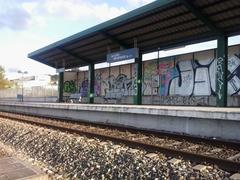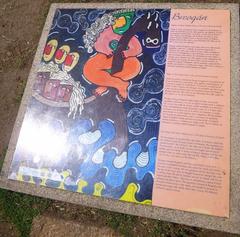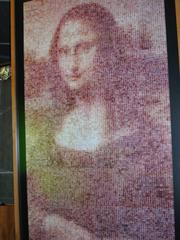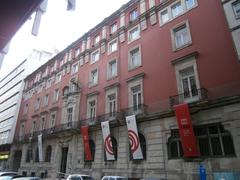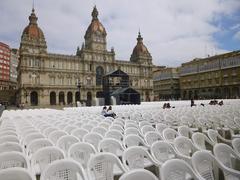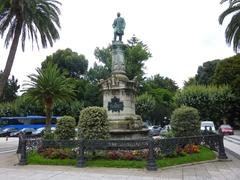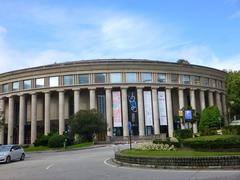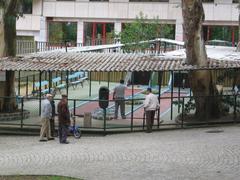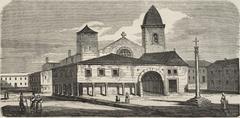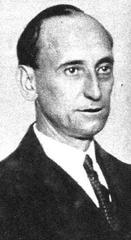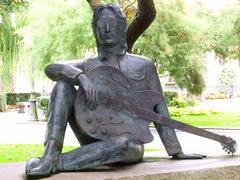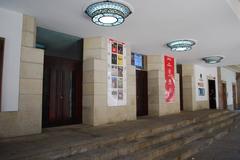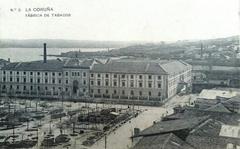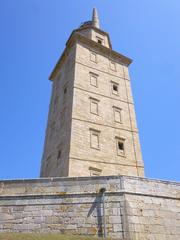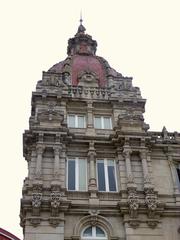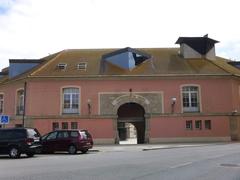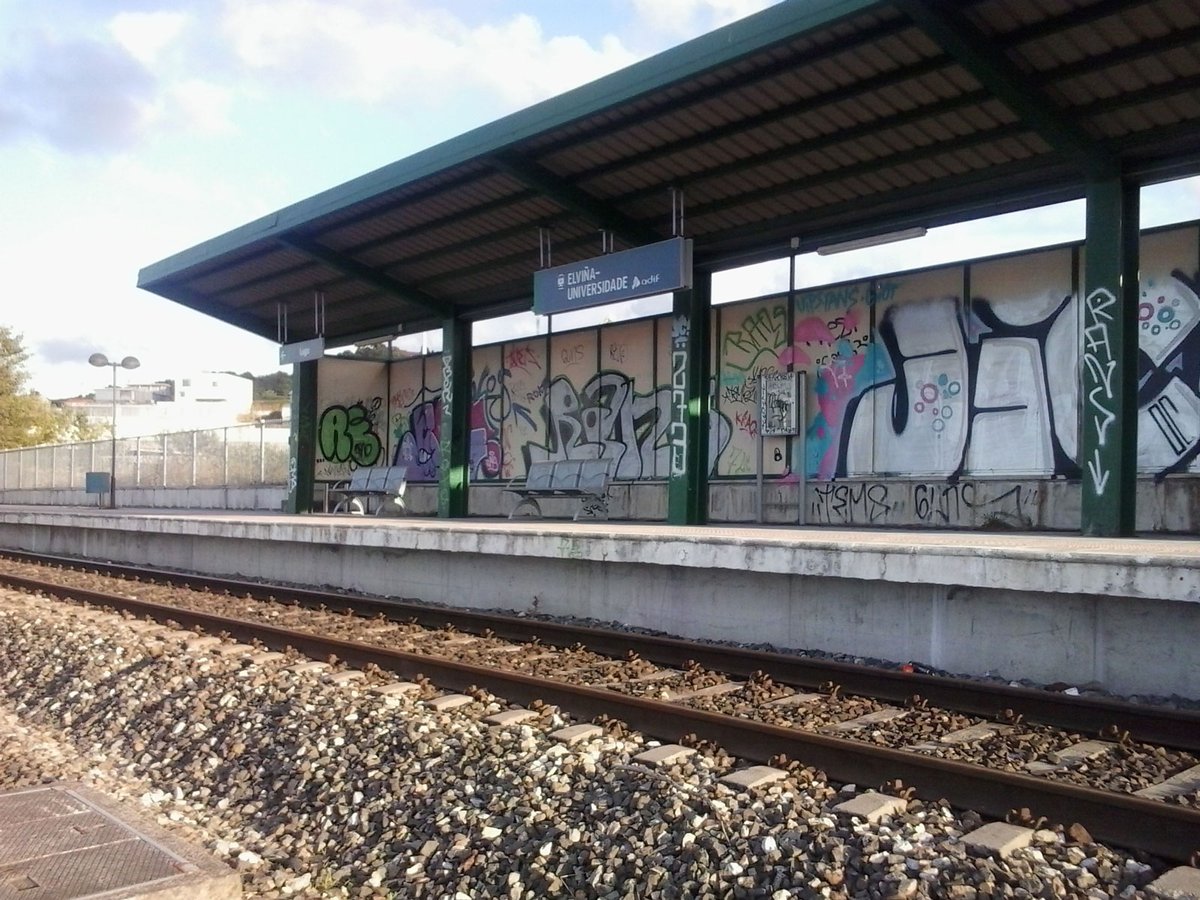
Elviña-Universidad Visiting Hours, Tickets, and Complete Guide to A Coruña Historical Sites
Date: 15/06/2025
Introduction
Elviña-Universidad, located on the southern edge of A Coruña, Spain, stands at the crossroads of ancient Celtic heritage, Napoleonic history, and modern academic ambition. Anchored by the Universidade da Coruña (UDC), this dynamic district features the Castro de Elviña, a significant Iron Age archaeological site, as well as key memorials related to the pivotal Battle of Elviña in 1809. Today, the area seamlessly blends its storied past with vibrant campus life, making it an essential stop for history enthusiasts, cultural explorers, and prospective students alike (Wikipedia: History of A Coruña; UDC Official Site; Galicia Guide: Coruna Exploration).
This guide provides in-depth information on visiting hours, ticketing, accessibility, guided tours, transportation, nearby attractions, and practical travel tips to help you make the most of your visit to Elviña-Universidad and its surrounding historical sites.
Table of Contents
- Historical Overview: From Prehistory to Modern Day
- Key Historical Sites and Visiting Information
- Accessibility and Visitor Facilities
- Special Events and Guided Tours
- Transportation and Getting There
- Nearby Attractions and Campus Highlights
- Visitor FAQs
- Practical Tips and Visitor Etiquette
- Conclusion and Recommendations
- Sources and Official Links
Historical Overview: From Prehistory to Modern Day
Prehistoric and Ancient Roots
Elviña’s origins trace back to a fortified Iron Age settlement (castro) inhabited by the Celtic Artabrians between the 3rd century BCE and 2nd century CE (Wikipedia: History of A Coruña; Mapcarta: Elviña Fortified Iron Age Settlement). The Castro de Elviña, with its defensive walls and communal dwellings, provides critical insight into Galicia’s pre-Roman culture. The region’s location near the estuary facilitated trade and cultural exchange with the wider Atlantic and Mediterranean worlds.
Roman and Medieval Influence
The arrival of the Romans in the 1st century BCE transformed Elviña and A Coruña into a strategic outpost, establishing roads, fortifications, and integrating the local population into the Roman economy. The iconic Tower of Hercules lighthouse, built in the 2nd century CE, remains a testament to this era. Following the fall of the Roman Empire, the area experienced periods of decline due to invasions and ruralization before gradually evolving into the rural parish that persisted through the Middle Ages (Wikipedia: History of A Coruña).
The Battle of Elviña (1809): Napoleonic Heritage
On January 16, 1809, Elviña became the theater of the Battle of Corunna (Battle of Elviña), a decisive conflict during the Peninsular War. British forces under General Sir John Moore clashed with the French army led by Marshal Soult, enabling the British to evacuate successfully from A Coruña’s port despite heavy casualties (Galicia Guide: Coruna Exploration; Napoleon Visit Coruna: Places to Visit). Memorials throughout the area honor the fallen and commemorate this significant historical event.
Key Historical Sites and Visiting Information
Castro de Elviña
- Description: A well-preserved Iron Age hillfort providing a window into Galicia’s Celtic past.
- Visiting Hours: Daily, 9:00 AM–7:00 PM (April–October), 9:00 AM–5:00 PM (November–March).
- Tickets: Free entry.
- Guided Tours: Available weekends and public holidays; advance booking recommended (Turismo Coruña).
- Accessibility: Paths are uneven and may not be suitable for wheelchairs. Sturdy footwear recommended.
Galiacho Rock
- Description: A battlefield site on the university campus associated with the 1809 battle, offering panoramic views.
- Visiting Hours: Open during university hours (8:00 AM–10:00 PM).
- Tickets: Free access.
Church of San Vicente of Elviña
- Description: A historic parish church reflecting the area’s rural medieval heritage.
- Visiting Hours: Weekdays, 9:00 AM–1:00 PM and 4:00 PM–7:00 PM.
- Tickets: Free.
Battle of Elviña Memorials
- Description: Monoliths and commemorative plaques honoring the British and French soldiers who fought in 1809, located throughout the university district and along Rúa Camiño da Iglesia.
- Visiting Hours: Freely accessible at all times.
Accessibility and Visitor Facilities
- Campus and Museums: Most university buildings, museums, and the Casa de las Ciencias are wheelchair accessible, with ramps, elevators, and adapted restrooms.
- Castro de Elviña: Limited accessibility due to uneven archaeological terrain.
- Restrooms and Amenities: Available in campus buildings and major museums.
- Visitor Support: The International Relations Office provides assistance and can arrange campus tours.
Special Events and Guided Tours
- Battle of Elviña Commemorations: Annual reenactments and guided tours every January.
- University Events: Public lectures, art exhibitions, and student festivals are regularly held; see the UDC events calendar.
- Guided Tours: Tours of the Castro de Elviña and battlefield sites are available during special events and by appointment.
Transportation and Getting There
- By Bus: Frequent city bus lines (20, 22, 24, UDC, among others) connect the campus and historical sites with the city center (Moovit).
- By Train: Elviña-Universidad train station offers regional connections (Paxinas Galegas).
- By Taxi: 7–10 minute ride from city center (Rome2Rio).
- On Foot or Bike: Pedestrian and cycling paths are available, and proposals for expanded sustainable mobility are underway.
Nearby Attractions and Campus Highlights
- Casa de las Ciencias: An interactive science museum with planetarium; open Tuesday–Sunday, 10:00 AM–7:00 PM (Casa de las Ciencias).
- Santa Margarita Park: Large city park with walking trails, playgrounds, and event spaces; open year-round.
- Aquarium Finisterrae: Marine life exhibits and underwater observatory; daily 10:00 AM–8:00 PM (Aquarium Finisterrae).
- Domus Museum: Focuses on human science and evolution; Tuesday–Sunday, 10:00 AM–7:00 PM.
- Riazor Beach: Popular urban beach with full facilities.
- A Coruña Old Town: Accessible in 15 minutes by bus or taxi; features historic plazas, tapas bars, and the iconic Plaza de María Pita.
Visitor FAQs
Q: What are the visiting hours for Castro de Elviña?
A: Daily from 9:00 AM–7:00 PM (April–October) and 9:00 AM–5:00 PM (November–March).
Q: Is entry to the Castro de Elviña free?
A: Yes, entry is free for all visitors.
Q: Are guided tours available?
A: Yes, on weekends, public holidays, and for groups by appointment.
Q: Is the campus accessible for visitors with disabilities?
A: Most buildings and museums are accessible, but the archaeological site has uneven terrain.
Q: How can I reach Elviña-Universidad from A Coruña city center?
A: Frequent buses and taxis connect the area in 15–20 minutes.
Q: What are the ticket prices for museums?
A:
- Casa de las Ciencias: ~€5 adults, €3 children/students.
- Aquarium Finisterrae: €10 adults, €4 children 4–12, free under 4.
- Domus: €6 adults, €3.50 children/students.
Practical Tips and Visitor Etiquette
- Language: Spanish and Galician are spoken; English is common in academic and tourist settings.
- Weather: Oceanic climate; June averages 14°C–21°C. Bring layers and waterproof clothing.
- Payments: Euro (€); cards widely accepted. Carry some cash for small purchases.
- Food: Try local specialties such as pulpo a la gallega and empanada gallega at campus cafeterias or city center restaurants.
- Safety: A Coruña is generally safe. Follow standard precautions.
- Photography: The Castro de Elviña, campus green spaces, and memorials offer excellent photo opportunities. Early morning and late afternoon provide the best lighting.
- Tipping: Not mandatory, but rounding up is appreciated.
Conclusion and Recommendations
Elviña-Universidad is a destination where history, culture, and academic innovation intersect. From exploring the ancient Castro de Elviña and Napoleonic battle memorials to attending university events and discovering nearby museums, visitors can experience the depth of A Coruña’s heritage. With excellent public transport, accessible facilities, and a thriving cultural calendar, planning your visit is easy and rewarding.
For up-to-date event listings, interactive maps, and exclusive guided content, download the Audiala app and follow the University of A Coruña’s social media channels.
Sources and Official Links
- Wikipedia: History of A Coruña
- Mapcarta: Elviña Fortified Iron Age Settlement
- Galicia Guide: Coruna Exploration
- Napoleon Visit Coruna: Places to Visit
- Wikipedia: University of A Coruña
- UDC Official Site
- Spain.info: Archaeology and History Museum
- Napoleon Visit Coruna: Military and History Museum
- A Coruña Tourism
- UDC Events Calendar
- Moovit Public Transport Information
- Rome2Rio Travel Info
- Paxinas Galegas Train Station Info
- ESN Coruña
- Nomads Travel Guide A Coruña
- Audiala App
For further planning, consult the UDC International Relations Office, A Coruña tourism resources, and the Audiala app for real-time updates.
